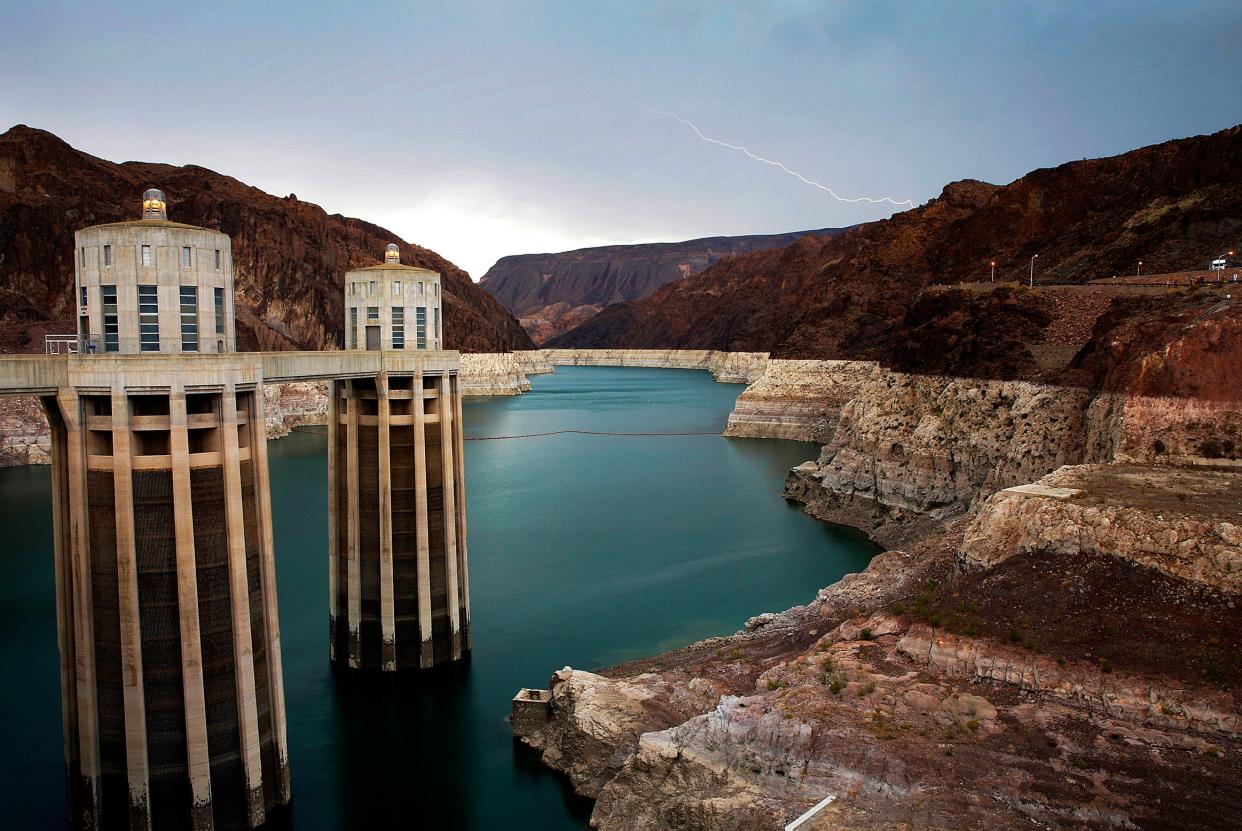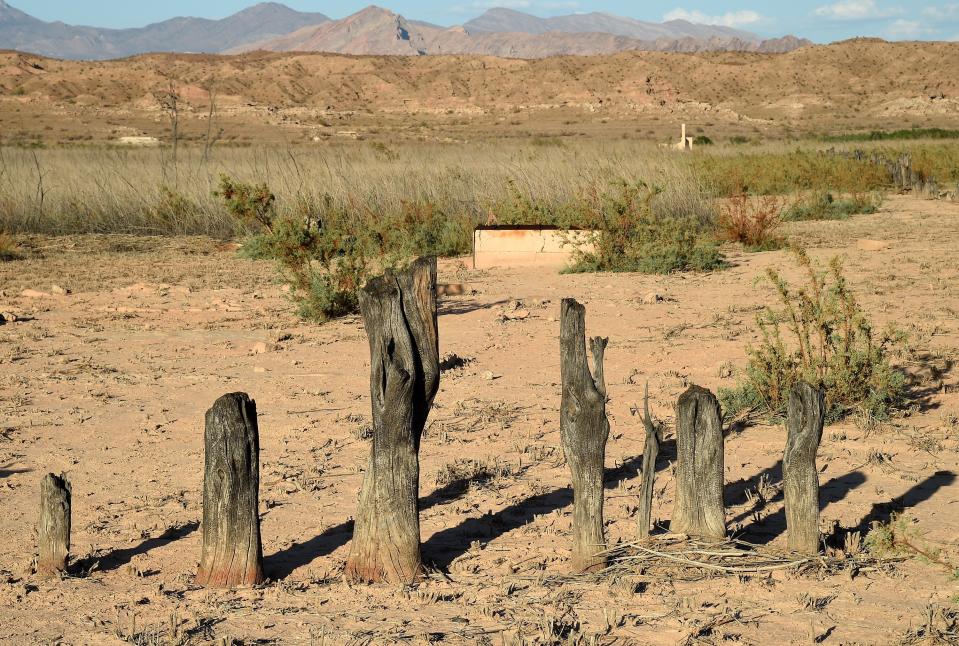‘Mega-drought’ on Colorado River system that supplies 40million people causes water level at famous Hoover Dam to drop by 130 feet

The Hoover Dam, pictured in 2018, is suffering a dire water shortage
(Copyright 2018 The Associated Press. All rights reserved.)A “mega drought” in the Colorado River system has caused the water level at the iconic Hoover Dam to drop by 13-stories in the last 20-years, a new report has claimed.
The river provides water to 40 million people across seven states, including Las Vegas and Phoenix, as well as large parts of Southern California, according to CBS.
But following decades of drought caused by the climate crisis, Lake Mead, the country’s largest reservoir that fills the famous Hoover Dam, is currently at just 37 per cent capacity.
Water authorities in Nevada have sounded the alarm that the water level at the dam, completed in 1936 to provide hydro-electric power and scene of many Hollywood movies including 1978’s Superman and 2002’s Solaris, has plummeted by 130-feet since 2000.

The federal government is expected to declare an emergency later this year that could force water shut offs in Nevada and Arizona as early as 2022, starting with farmers and businesses, rather than residents.
Pat Mulroy, the former head of the Southern Nevada Water Authority, told CBS it was “an enormous wake up call”.
Ms Mulroy added: “We’re at a tipping point. It’s an existential issue for Arizona, for California, for Nevada. It is just that simple.”
If you don’t believe in global warming, well here’s some proof. This is the #hooverdam. Last time it was full was back in 2000. Mega drought happening. pic.twitter.com/YmdyvnhtMg
— Steve 🐼 (@stv_lm) June 7, 2021
Arizona farmer Dan Thelander told CBS that by 2023 they expected to lose all their water.
He said: “If we don’t have irrigation water, we can’t farm. So, next year we are going to get about 25% less water, means we’re going to have to fallow or not plant 25-per-cent of our land.The future here is, honestly I hate to say it, pretty cloudy.”
The dire situation at Lake Mead has largely been caudsed by the even more dire situation at Lake Powell, which usually feeds it but is at 34-per-cent capacity, as reported by USA Today.
Any volunteers want to have this view overlooking the Hoover Dam? 🧐 pic.twitter.com/oye7feQIj6
— Arizona Capitol Museum (@azcapitolmuseum) June 4, 2021
Mike Bernardo of the federal Bureau of Reclamation, told USA Today that the arrival of the dam in the 1930s was an engineering marvel that “controlled the Colorado’s floods, opened arid lands for farming and fed the rise of cities across the Southwest.”
He said: “Unfortunately, due to how dry things have been, what we’re seeing is Lake Powell’s elevations are dropping.”
Read More
Fox News accused of blocking advert about January 6 violence
More than a dozen people injured after city bus crashes into Brooklyn home
Woman glues 7700 pennies to her bathroom floor and potentially misses out on a fortune

